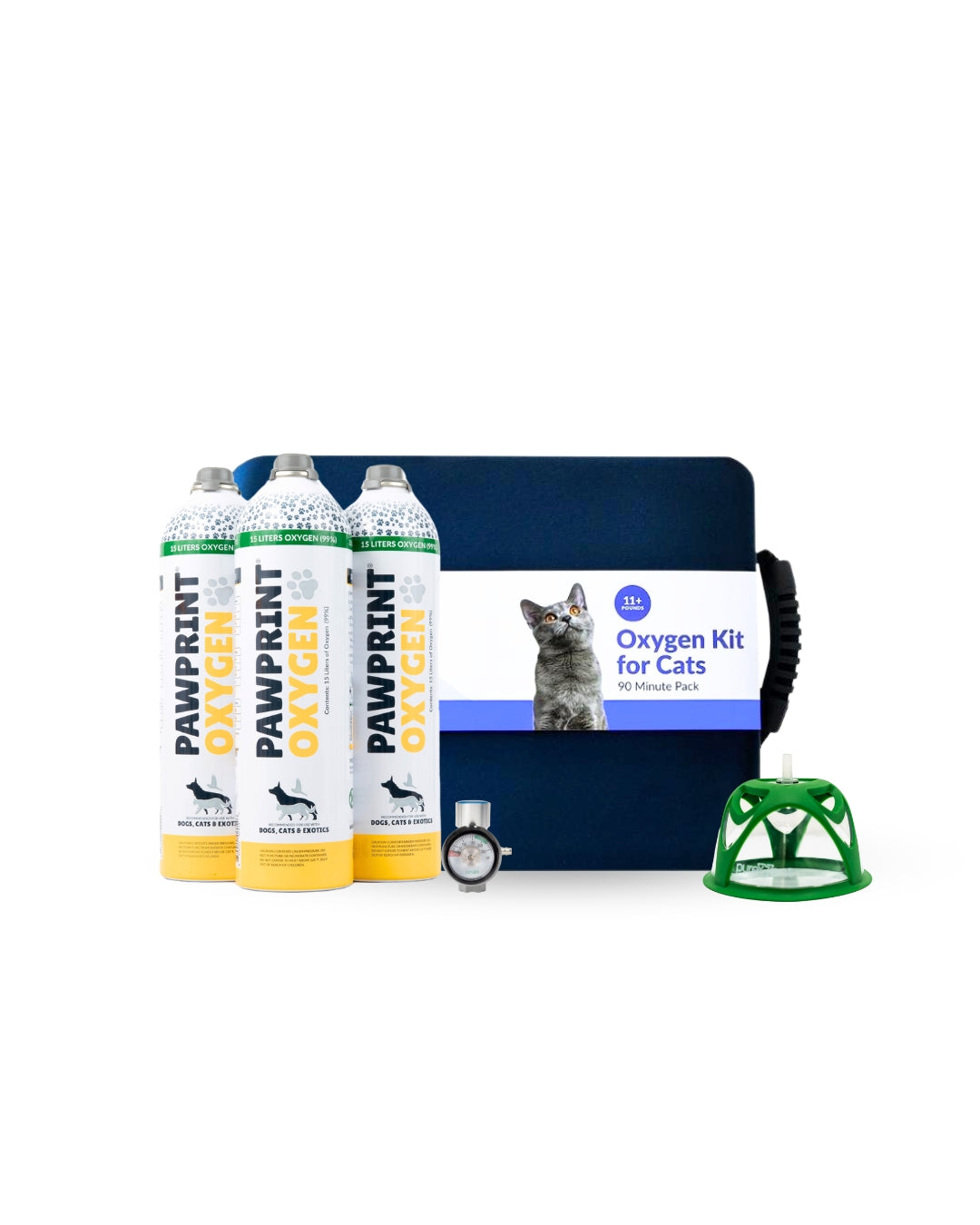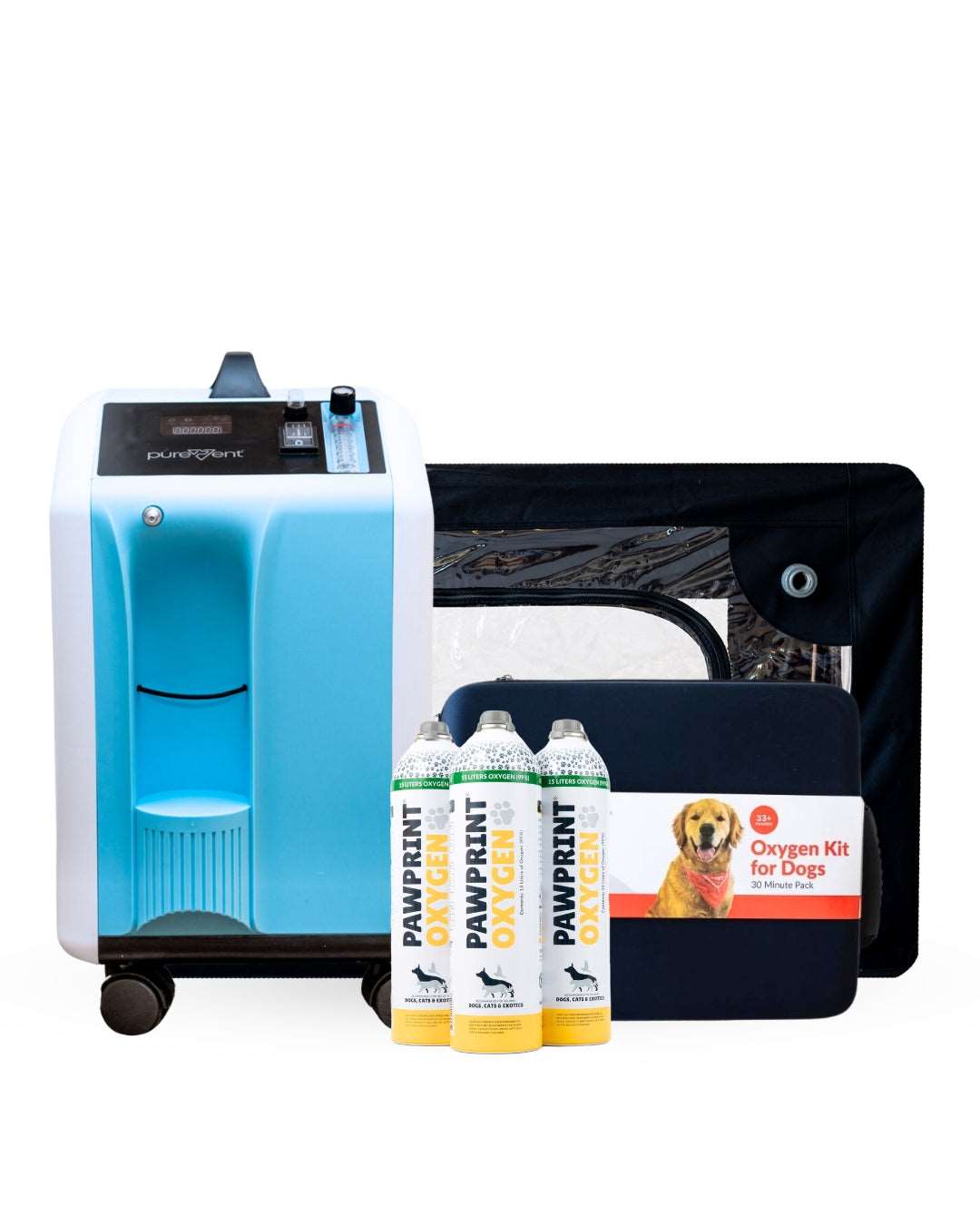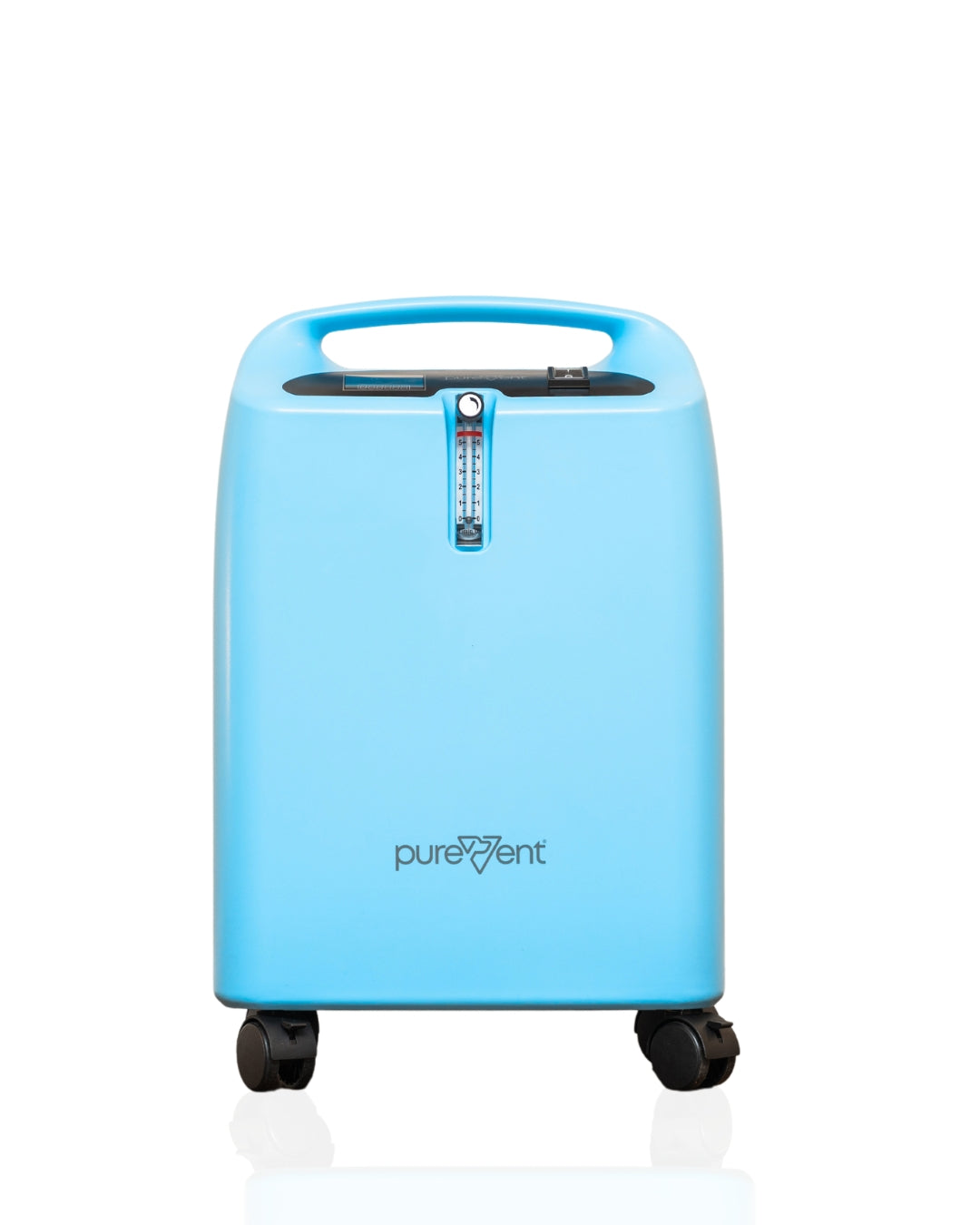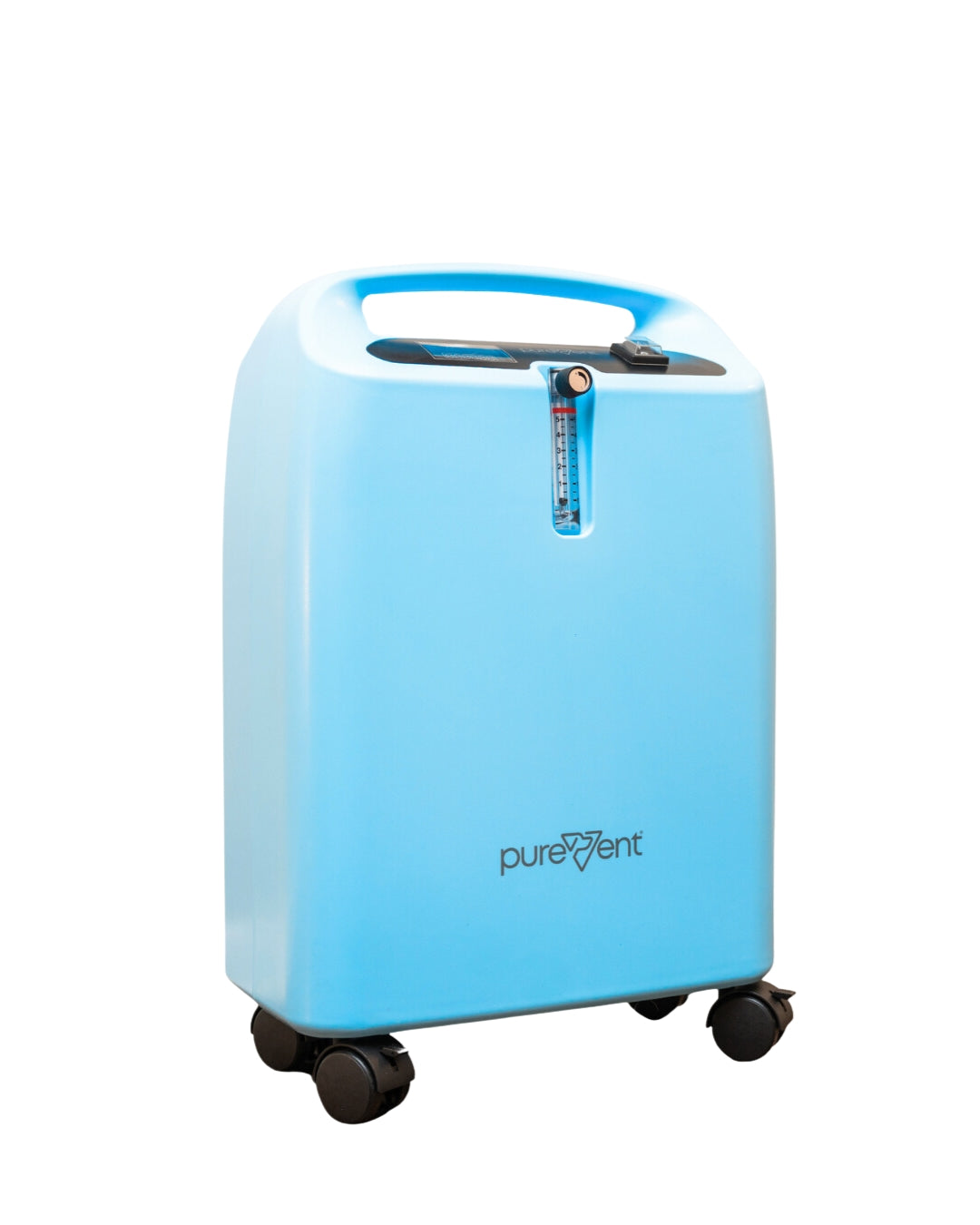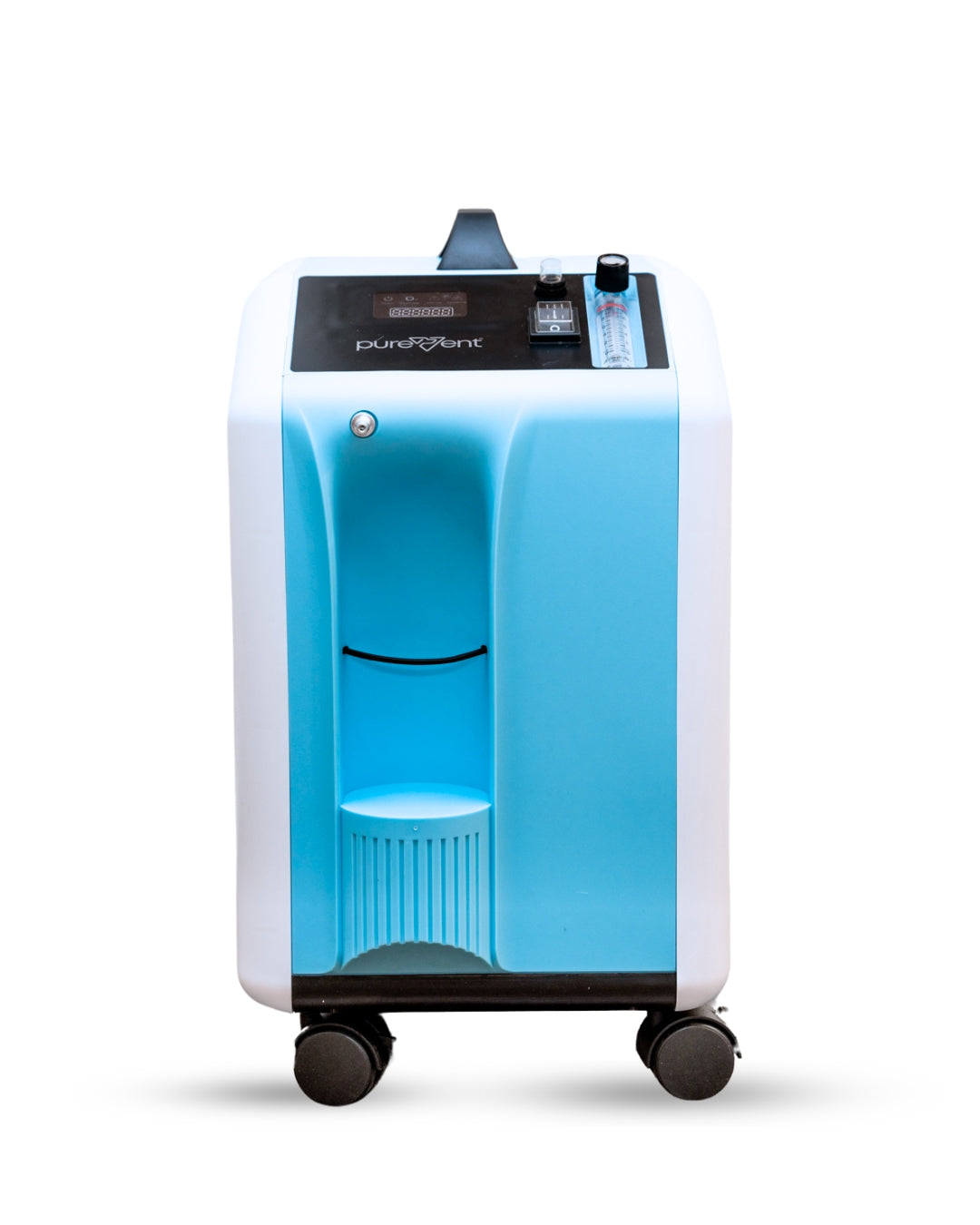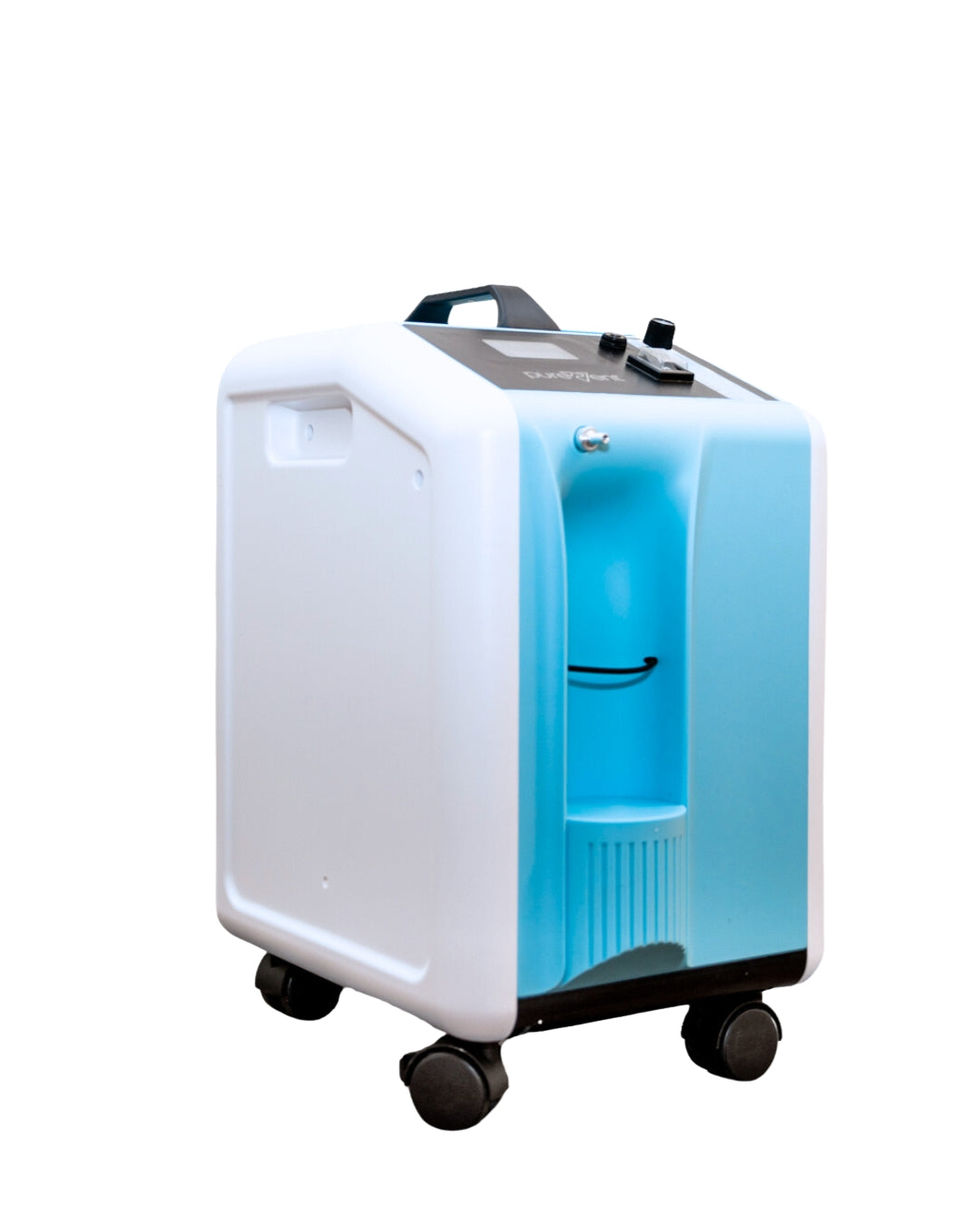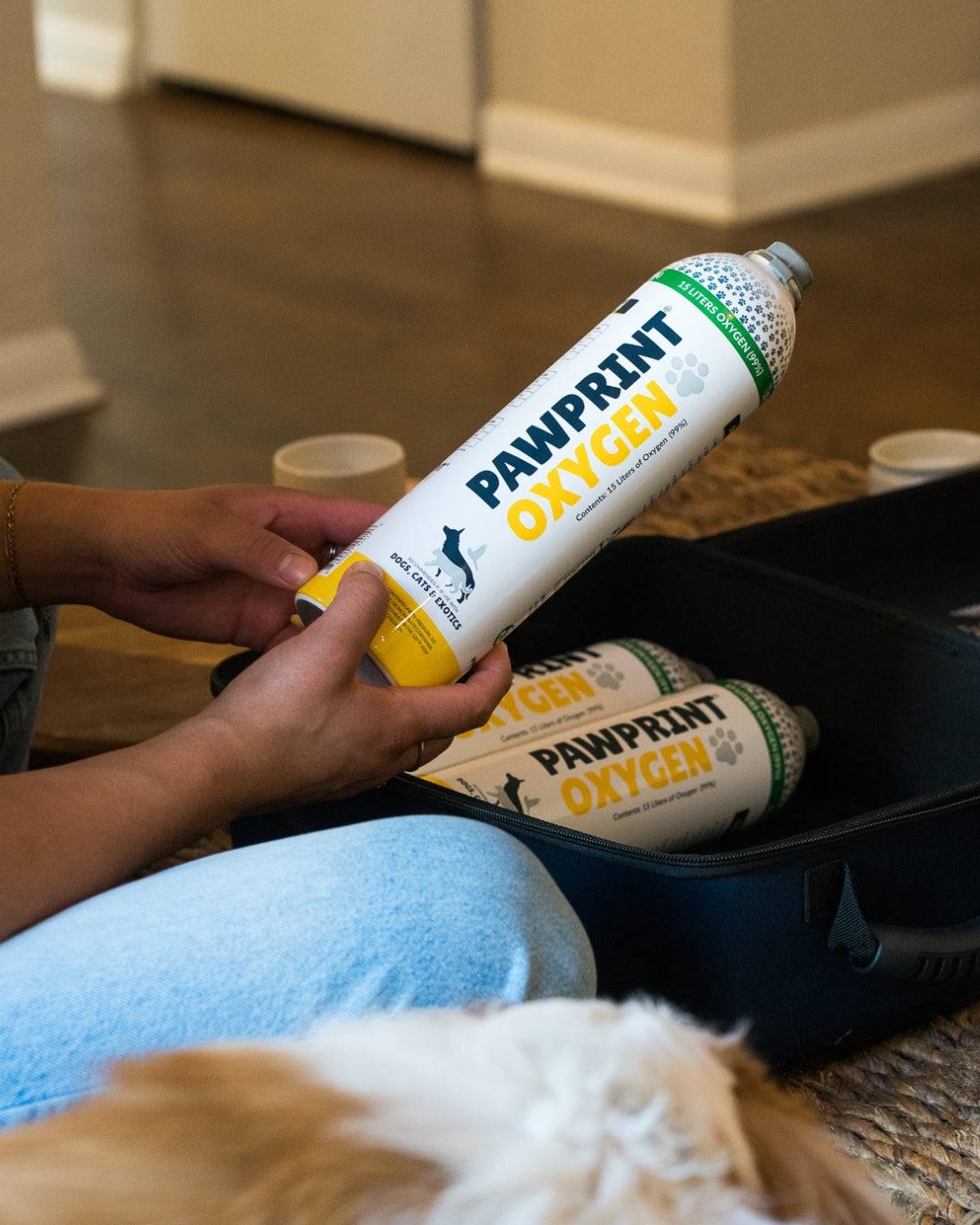Feline asthma is a condition that affects the lower airways of a cat’s respiratory tract. When exposed to an irritant or allergen, the cat’s immune system overreacts and responds by releasing chemical stimulants that cause inflammation and swelling. The tissue of the bronchi swells and the surrounding muscles contract, causing the airway to narrow to the point that the cat experiences symptoms, which can be severe.
Feline asthma has no known cure, but with medications and oxygen therapy, cats can live a relatively normal, healthy life after diagnosis. The purpose of this article is to explore how oxygen therapy can aid in managing feline asthma.
Understanding Feline Asthma
While feline asthma has been studied at length, an exact cause has not been determined. Feline asthma affects 1-5% of cats and is most diagnosed in adult cats between 2-8 years old. It is diagnosed about 50/50 between male and female cats. Many studies have hoped to link feline asthma to genetics as some cats have seemed to pass the condition down hereditarily, but the evidence does not hold up in larger studies. However, cats that go outside may be more likely to be asthmatic as they will likely encounter more potential allergens and irritants.
Environmental factors that trigger asthmatic episodes are:
- Smoke (from a fireplace, cooking, or a cigarette)
- Aerosol sprays
- Cleaners
- Dusty cat litter
- Pollen
- Dust Mites
- Mold
- Mildew
- Heavily scented candles
- Certain foods
- Hot, humid conditions
Common symptoms of an asthma attack are:
- Difficulty breathing
- Wheezing, most commonly upon exhale
- Rapid breathing
- Coughing and hacking
- Open-mouth breathing
- Vomiting, gagging, and retching
- Low body stance with neck extended
The 4 Grades of Feline Asthma
Feline asthma greatly affects a cat’s respiratory system and overall health, especially if the condition is left untreated. There are four classifications for an asthmatic episode, and the classifications can be used by your veterinarian to determine which treatments are best. The four classifications are:
-
Mild:
Symptoms are intermittent but not daily and do not interfere with the cat’s lifestyle.
-
Moderate:
Symptoms do not occur daily, but they are more severe and debilitating and have started to interfere with the cat’s activities.
-
Severe:
Significantly severe symptoms occur daily.
-
Life-threatening:
Constriction of the bronchi leads to potentially life-threatening oxygen deprivation. Veterinary care is mandatory to bring relief.
If the mild symptoms are ignored and go untreated, the condition can rapidly progress to more severe stages and the cat may die. Early diagnosis is crucial to ensure a long, healthy life for cats with asthma.
For Transport and Symptomatic Emergencies
Our Oxygen Kits for Cats are the perfect solution for pet owners who want to be prepared in case of an emergency, during transport to a care facility or want to administer Oxygen to a pet at home with a health condition. This product is available to purchase without a prescription.
Diagnosing Feline Asthma in Your Cat
When attempting to diagnose feline asthma, veterinarians commonly utilize physical exams, blood work, x-rays, and fecal exams. The difficult part of confirming a feline asthma diagnosis is that many diseases have similar symptoms to those present with asthma, and veterinarians need to go through the process of excluding the other diseases before confirming the diagnosis.
To start, a physical examination is performed and is helpful in many ways. The vet will listen to the cat’s breathing with a stethoscope and pinpoint the source of wheezing. Additionally, the overall health of the cat may lead to other illnesses, so a complete set of vitals will also be taken. Blood tests are helpful as feline asthma will typically be characterized by suspiciously high levels of white blood cells called eosinophils, which are associated with allergic reactions. X-rays can show certain changes in the lungs, and feline asthmatic attacks can sometimes be characterized by an overinflation of the lungs because the cat may be having trouble exhaling. This is called ‘air trapping’.
Fecal exams can help to rule out lungworm, which is a parasite that can live in the feline bronchi and lead to asthma attacks. By putting the results from all the diagnostics together, veterinarians can get a clearer picture of what is going on with their patient and can more easily diagnose feline asthma.
Pet Oxygen Chamber
The Buster ICU Pet Oxygen Cage is a revolutionary product designed for safe and easy administration of oxygen therapy to pets. Featuring a unique Venturi system, it provides the optimal level of oxygen and disperses carbon dioxide, heat, and humidity, ensuring comfort and safety for your pet.
This is the same Oxygen Chamber trusted by thousands of Veterinary Hospitals. Oxygen Chamber must be paired with an Oxygen source (5 or 10 L Concentrator). Made with high-quality materials, it’s durable for everyday veterinary use and protects pets from external elements. Ideal for clinics, hospitals, and home use.
Understanding the Importance of Oxygen Therapy
Oxygen therapy has been regularly utilized in veterinary medicine for decades. At home oxygen therapy, which has become very important for the treatment of respiratory illnesses in cats, can benefit pets with many different respiratory conditions.
Some common diagnoses that may benefit from at-home oxygen therapy are:
- Congestive Heart Failure (CHF)
- Lung Cancer
- Feline Asthma
- Pneumonia
Cats with feline asthma may benefit from at-home oxygen therapy because of the unpredictable nature of asthmatic attacks. Since asthma attacks can come on with little warning and can progress very quickly to a life-threatening situation, having oxygen on hand to help alleviate oxygen deprivation is crucial. Additionally, in conjunction with inhaled corticosteroids and bronchodilators, which open the airways, oxygen can help the cat recover quicker. Oxygen therapy is provided at a much higher saturation than what the cat can inhale from room air (typically around 40-65% saturation versus 21% in room air), so oxygen therapy also assists with providing much needed oxygen to the deprived cells of the body.
Types of Oxygen Delivery Systems for Cats
At-home oxygen therapy equipment varies depending on the needs of the cat. For cats that have intermittent respiratory distress or may require transport to the veterinary clinic for appointments or emergencies, having portable oxygen canisters on hand is ideal. The oxygen canisters are administered with a pet oxygen mask. Oxygen can be administered for therapy sessions or emergencies at home or during transport to the veterinary clinic.
For cats that need longer therapy sessions (more than 30 minutes a day) or higher flow rates than the portable canisters can provide, an oxygen concentrator may be recommended. Since a medical-grade oxygen concentrator produces oxygen by pulling in room air and producing an endless supply of 96% oxygen gas, therapy can be provided for as long as needed. The concentrator can be used with either a pet oxygen mask or oxygen cage giving owners the ability to choose what method of administration best fits their cat’s needs and temperament.
How to Set Up and Use Oxygen Therapy at Home
When using portable oxygen canisters, setting up your equipment is very simple. Here is a breakdown of set-up instructions for the Portable Oxygen Kit:
- After unboxing your kit, ensure you have all necessary components: oxygen canisters, a flow regulator, an oxygen mask, and a line of oxygen tubing.
- Connect the oxygen tubing to the base of the mask, ensuring a snug fit.
- Connect the opposite end of the tubing to the metal barb on the side of your flow regulator.
- When you are ready to administer oxygen, place the regulator on the top of the canister. Push down firmly and twist clockwise. The oxygen will now be flowing.
- Hold the mask over your cat’s muzzle for as long as needed. A typical therapy session is between 2-5 minutes, but oxygen can be given until a more normal respiration is reached.
- When you are ready to stop treatment, you will turn the regulator counterclockwise and lift the regulator up and off the canister. The rest of the oxygen will stay under pressure inside of the canister until the next time you need it.
Setting up an oxygen concentrator is also simple but will vary depending on which administration method is being used. With a pet oxygen mask, the set-up is very similar to portable canisters. You will follow these set up instructions:
- Unbox your oxygen concentrator, ensuring you have oxygen tubing and a mask included. Plug in your concentrator.
- Connect one end of the oxygen tubing to the base of your mask, and the other end to the barb on the concentrator.
- Turn on your concentrator and ensure that the indicator light goes from a blinking green or yellow light to a solid green light, indicating the correct concentration has been reached.
- Using the flow dial on the concentrator, select the appropriate flow rate based on what has been prescribed by your veterinarian. Again, ensure the indicator light is solid green.
- Treatment can now be provided by holding the mask over your cat’s muzzle.
If you are using an oxygen cage, you will connect the end of the tubing from the concentrator to the Venturi adapter on the cage. We advise closely following the set-up instructions included with your cage to ensure a safe therapy session.
Long-Term Management of Feline Asthma
Managing feline asthma requires a comprehensive approach that may include prescribed medications, environmental changes, and regular veterinary check-ups.
Some common medications typically prescribed for feline asthma are:
-
Bronchodilators:
Are often prescribed to help open the airways and alleviate breathing difficulties in cats with asthma. These medications are typically administered via inhalers or nebulizers but may also be administered as a pill or injection. - Anti-inflammatory Drugs: Corticosteroids or other anti-inflammatory medications may be prescribed to reduce airway inflammation and prevent asthma attacks.
-
Oxygen Therapy:
At-home oxygen equipment may be recommended to help your cat recover from asthmatic episodes more quickly. It can also be used during transport to the veterinary clinic or pet emergency in the case of a life-threatening episode.
Reduction of environmental triggers is also vital to ensuring that asthmatic attacks are kept to a minimum. Try to identify and minimize exposure to environmental triggers. Keep your home clean and free of dust, mold, and other allergens that could exacerbate asthma symptoms. As much as possible, use cleaners that are unscented. Avoid spraying perfume or burning scented candles in areas where your cat typically hangs out. Regular vacuuming, dusting, and the use of air purifiers can help reduce airborne triggers, like dust, pollen, and dander. Minimize stressors in your cat's environment, as stress can exacerbate asthma symptoms. Provide a calm and stable environment for your cat to reduce stress levels.
Regularly scheduled veterinary check-ups are essential for monitoring your cat's asthma symptoms and adjusting treatment as needed. Your veterinarian can assess your cat's overall health and provide preventive care to help manage asthma and prevent any complications.
Oxygen therapy plays a crucial role in managing acute asthma attacks and providing relief during episodes of respiratory distress. However, it is important to recognize that oxygen therapy is just one component of a broader management plan for feline asthma. Oxygen therapy is often used as part of the emergency management of severe asthma attacks to help improve oxygenation and alleviate respiratory distress. Oxygen therapy can provide short-term relief during acute episodes of respiratory distress, allowing your cat to breathe more comfortably until other medications take effect. Oxygen therapy should be used in conjunction with other medications prescribed for feline asthma, such as bronchodilators and anti-inflammatory drugs. It is not a substitute for long-term asthma management.

The Role of Oxygen Therapy in Managing Feline Asthma
During an asthma attack, the airways in the lower respiratory tract narrow, and oxygen cannot be easily exchanged with carbon dioxide. If this trend continues, the cat’s body becomes oxygen deprived. After a short period of time with no treatment, the situation can become life-threatening. As air is also trapped in the lungs with no way to escape through the inflamed airway, carbon dioxide toxicity is also possible. When oxygen is provided at higher concentrations than the cat can breathe in from room air, oxygen can be utilized across a wider range of cells in the cat’s body and helps them to recover quicker.
However, if oxygen is administered before the airways are fully opened, the benefits of therapy are limited. In the case of a mild to moderate asthmatic attack where the airways are constricted but not fully closed, oxygen is still able to help but recovery will typically take longer. Used in conjunction with other medications, like an inhaled corticosteroid or bronchodilator, oxygen is much more effective. Once the airways have been opened with the inhaled medication, oxygen is able to flood the lungs with much needed oxygen, and exchange with CO2 can continue as usual.
In the case of a severe or life-threatening episode, where the airway is nearly or completely closed, oxygen will do little to help the cat recover, as they cannot bring oxygen into their lungs. In this case, pet owners have two options. If they have an inhaler, that should be administered right away, and oxygen should be given right after. The cat will need to be closely monitored to ensure they are recovering well, and that they do not need additional vet care. If an inhaler or other medications are not available to help with opening the airway, oxygen should be administered on the way to the emergency clinic.




